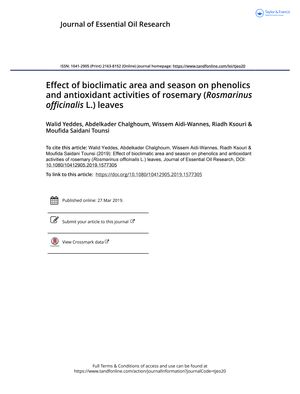Effect of bioclimatic area and season on phenolics and antioxidant activities of rosemary (Rosmarinus officinalis L.) leaves
March 2019
in “Journal of Essential Oil Research”

TLDR Rosemary's antioxidant content changes with the climate and season.
In the 2019 study, researchers found that the phenolic content and antioxidant activities of rosemary (Rosmarinus officinalis L.) leaf extracts varied significantly across different bioclimatic areas and seasons in Tunisia. Ethanol was the most effective solvent for extracting phenolic compounds, except for carnosic acid, which was best extracted with ethyl acetate. The highest levels of phenolic compounds were generally found in the summer, with the exception of rosmarinic acid, which peaked in winter. These variations were linked to environmental factors that influence the plant's defense mechanisms. Antioxidant activities also varied, with the highest antiradical scavenging activity observed in the Msa area. The study concluded that bioclimatic and seasonal conditions have a significant impact on the phenolic composition and antioxidant potential of rosemary leaves.
View this study on tandfonline.com →